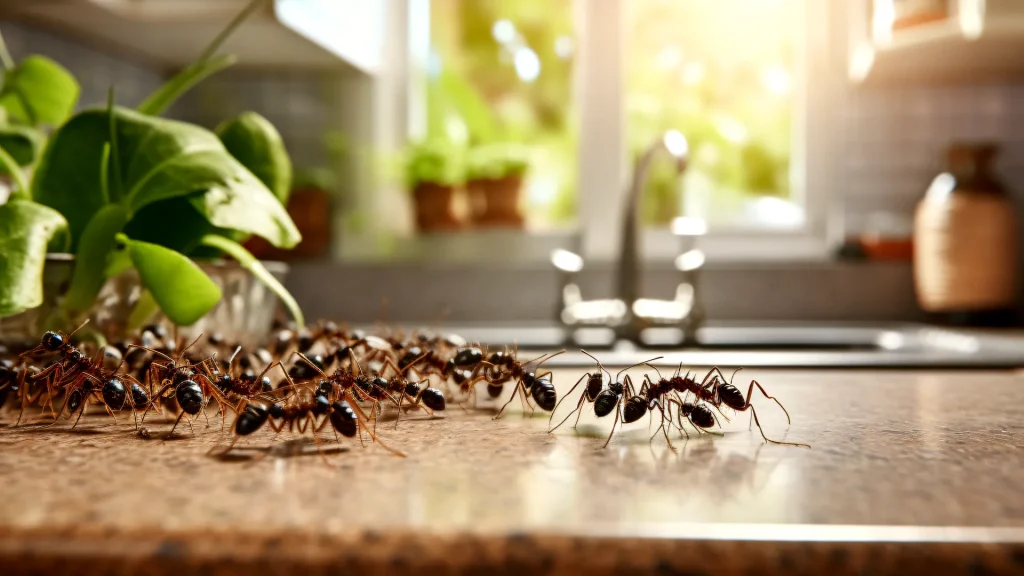Pest infestations in food storage areas can lead to significant losses and health hazards. Maintaining a pest-free environment is crucial for both residential and commercial properties. By following a few key practices, you can prevent pests from contaminating your food storage areas. This article will outline effective strategies to keep your food safe from unwanted invaders.
Understanding Common Pests in Food Storage Areas
Before delving into prevention methods, it’s essential to understand the types of pests commonly found in food storage areas:
- Rodents: Mice and rats are notorious for infiltrating food storage spaces, causing contamination and damage.
- Insects: Pests like ants, beetles, weevils, and cockroaches can easily find their way into stored food items.
- Moths: Pantry moths, also known as Indian meal moths, are common in stored grains and other dried foods.
Preventative Measures
1. Proper Storage Techniques
One of the most effective ways to prevent pest infestations is by using proper storage techniques:
- Airtight Containers: Store food in airtight containers made of glass, metal, or thick plastic. This prevents pests from smelling and accessing the food.
- Sealed Bags: Ensure all bags of food are sealed tightly. Consider using vacuum-sealed bags for long-term storage.
- Off the Floor: Keep food storage off the floor and away from walls. Use shelving units to organise food items and make it harder for pests to access them.
2. Maintain Cleanliness
A clean environment is less attractive to pests:
- Regular Cleaning: Regularly clean shelves, floors, and corners of storage areas to remove crumbs and spills that attract pests.
- Immediate Spill Management: Promptly clean any spills or crumbs to prevent attracting insects and rodents.
- Proper Waste Disposal: Ensure bins are covered and emptied regularly. Avoid leaving food waste exposed.
3. Inspect and Rotate Stock
Regular inspection and rotation of stock can help identify and eliminate potential pest problems:
- Regular Checks: Inspect stored food items regularly for signs of pest activity, such as holes in packaging or droppings.
- First In, First Out (FIFO): Implement the FIFO method to ensure older items are used before newer ones, reducing the chances of food becoming stale and attracting pests.
- Remove Infested Items: Immediately remove and dispose of any infested items to prevent the infestation from spreading.
4. Seal Entry Points
Prevent pests from entering your storage areas by sealing entry points:
- Inspect for Gaps: Check for gaps or cracks in walls, floors, and around doors and windows. Seal these with caulk or weatherstripping.
- Screen Vents: Ensure that vents and windows are fitted with fine mesh screens to prevent insects and rodents from entering.
- Door Sweeps: Install door sweeps on exterior doors to close gaps between the door and the floor.
5. Temperature and Humidity Control
Controlling the environment can deter pests:
- Cool Temperatures: Store food in cool, dry places. High temperatures can attract pests and promote their breeding.
- Humidity Levels: Keep humidity levels low to prevent mould growth and pest infestations. Consider using dehumidifiers if necessary.
Specific Tips for Different Pests
Rodents
- Traps and Baits: Use traps and baits strategically placed around the storage area. Regularly check and empty traps.
- Rodent-Proofing: Ensure all possible entry points are sealed. Rodents can squeeze through small gaps, so thorough inspection is essential.
Insects
- Natural Repellents: Use natural repellents such as bay leaves, cloves, or essential oils like peppermint and eucalyptus to deter insects.
- Pheromone Traps: Pheromone traps can be effective for monitoring and reducing populations of pantry moths and other insects.
Moths
- Freezing: If you suspect an infestation, freeze grains and other dried goods for a few days to kill any larvae or eggs.
- Airtight Containers: Store susceptible items like flour, grains, and nuts in airtight containers to prevent moths from laying eggs.
Regular Monitoring and Professional Help
- Pest Control Inspections: Schedule regular inspections with a professional pest control service to ensure your storage area remains pest-free.
- Professional Treatment: If you encounter a persistent infestation, professional pest control services can provide targeted treatments to eliminate the problem.
Conclusion
Preventing pest infestations in food storage areas requires a combination of proper storage techniques, cleanliness, regular inspections, and environmental control. By following these guidelines, you can safeguard your food supplies from contamination and ensure a healthy and safe storage environment. Investing time and effort into these preventative measures will save you from the inconvenience and costs associated with dealing with pest infestations. For persistent problems, always seek professional assistance to effectively manage and eliminate pests.

